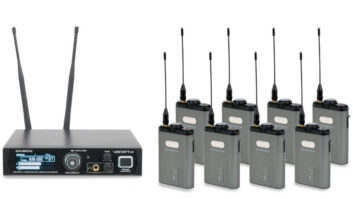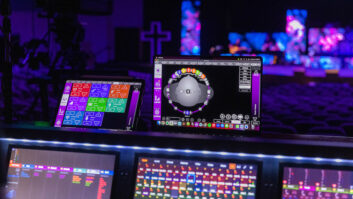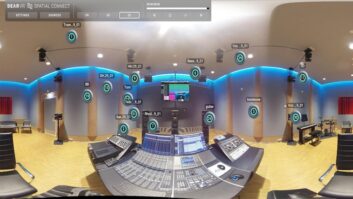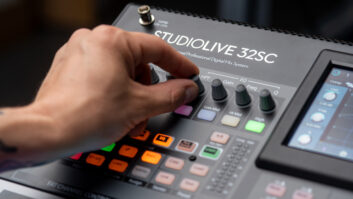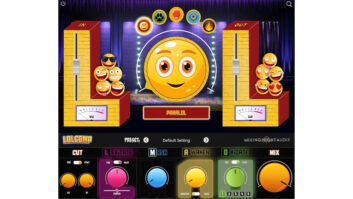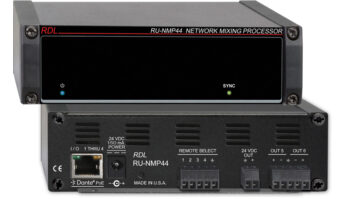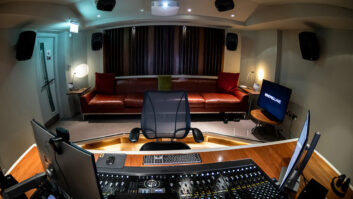While contemporary worship music can trace its roots back to the 1960s in the United States, it’s only relatively recently that audio technology has ushered in the concept of the so-called “silent stage.” Where once the congregation may have struggled to lift its collective voice above the volume level of the praise and worship band, now, through a combination of strategies including the adoption of personal monitor systems by the musicians, a better equilibrium can be achieved.
In-ear monitor options go far beyond wired or wireless systems to include numerous interface-based, AoIP-enabled personal monitor systems that place control of each individual mix at musicians’ fingertips. At the 2018 Winter NAMM Show, for example, PreSonus introduced its first personal monitor product, EarMix 16M, which accepts 16 mono input channels over an AVB network, plus a local aux input. The system is designed to integrate with the company’s StudioLive Series III mixer family but is compatible with other AVB-enabled systems. It is expected to be available in the first quarter of 2018, according to the company.
The EarMix 16M’s mixer interface allows individuals to create custom mixes with channel grouping and stereo channel linking and apply limiting and EQ to any channel in addition to the overall stereo mix. Up to 16 mix scenes can be stored for later recall.
Related: Reaching to the Choir: Choir Mics, by Al Fernald, Pro Sound News, Feb. 27, 2018
Network connections on the rear of the box allow daisy-chaining multiple EarMix 16M units from a StudioLive Series III mixer. The system may alternately be set up using free PreSonus UC Surface control software for Mac, Windows, iPad and Android. In applications where it’s not convenient to power a network of monitor mixers using the external power supplies, the EarMix 16M system can instead be interconnected using PoE (power over Ethernet).

Allen & Heath entered the networked personal mixer market with the ME-1 back in 2013. That system operates with the company’s dLive, SQ, GLD and Qu series digital mixers, but may alternatively be driven from other digital mixers supporting Dante, EtherSound or MADI by interfacing via Allen & Heath’s ME-U hub, which also offers compatibility with Aviom Pro16 personal mixing systems.
According to Ben Morgan, Allen & Heath’s live sound product manager, “Our established ME-1 Personal Mixer allows a user to craft the perfect mix from up to 40 sources, but many customers have been asking for a more accessible alternative for volunteers and first-time users. That’s exactly what we achieved with the ME-500.”
The new ME-500, which offers the same interoperability as the ME-1, allows musicians to create custom mixes from 16 inputs, with limiting and EQ, and store and recall eight user presets for different mixes, users or shows, and save them to a USB drive. The ME-500 ships with an external power supply but also supports PoE. Stereo headphone outs are via 3.5mm and quarter-inch jacks, with a quarter-inch mono balanced line out additionally enabling the mixer to drive an external speaker or wireless IEM transmitter. According to the manufacturer, any number of ME-500 and ME-1 personal mixers can be added to a system.

The myMix system pushes the capabilities of the personal monitor mixer a little further than most available systems, allowing up to 250 devices to be on a network. Any user can select from all available audio channels on the network and create a custom stereo mix for his or her headphones, in-ear monitors or external powered speakers. The myMix can also record up to 16 channels as 24-bit WAV files onto optional SDHC cards.
The myMix system will interface with any analog or digital mixing console, via D-Sub connections on the input expander boxes or over MADI using RME interfaces. (Both brands are distributed by Synthax.) PoE is also supported.
Each myMix user can create a stereo mix, selecting up to 16 from as many as 500 network channels and applying stereo effects, EQ and panning. The stereo mix can be sent back to the network for other musicians to listen to or as a submix within myMix.
Related: Houses of Worship stories on Pro Sound News
Andy Finseth, lead audio engineer at First Baptist Church of Everett, WA, offers the example of his setup: “We have a total of 12 myMix, two IEX16L input expanders and myMix Control. One myMix is used at the FOH console. The drummer is creating an eight-mic drum sub mix and sending that to the network for all to use as their drums. He is then using the second myMix for his own IEM.”
The drummer’s two-myMix rig replaced a second mixing console and splitter snake. “This is so much cleaner, using two myMix units,” says Finseth, noting that the system carries 34 channels, including the drum sub mix.

Introduced at the 2017 Summer NAMM Show, Audiofusion is a software-based system—currently in beta testing, according to the company, and in use by various houses of worship, musicians and venues—that turns any smartphone into a wireless IEM bodypack. A product from Austin-based startup Audio Fusion Systems, the software uses patent-pending audio and networking technology to pass digital audio from the mixing console or an audio interface and broadcast it in real time over Wi-Fi, allowing musicians to receive a custom monitor mix on personal mobile devices. Kevin Slick, inventor and creator of the Audiofusion technology, is a former senior software engineer for Dell and AMD, and is also a musician and sound technician.
While Audiofusion is a software product, offering an alternative to hardware-based personal monitor systems, it does require some hardware. The output from a mixing console or audio interface is sent to a laptop running the company’s SoundCaster software, which converts the audio source to multiple Wi-Fi streams for each of the musicians on stage. A Wi-Fi router—at the venue or carried by the musicians—then distributes those signals.
A tablet running the Director app passes the channel labels, icons and levels, which can be set up ahead of time, to the individual smartphones. The tablet also enables the musicians or the engineer to pan the sources according to their locations on the stage, and to tweak settings during the performance. The software allows presets to be saved—say, for different regular venues, or for different band lineups. The musicians launch the Performer app on their phones or tablets and the setup is automatically loaded.
